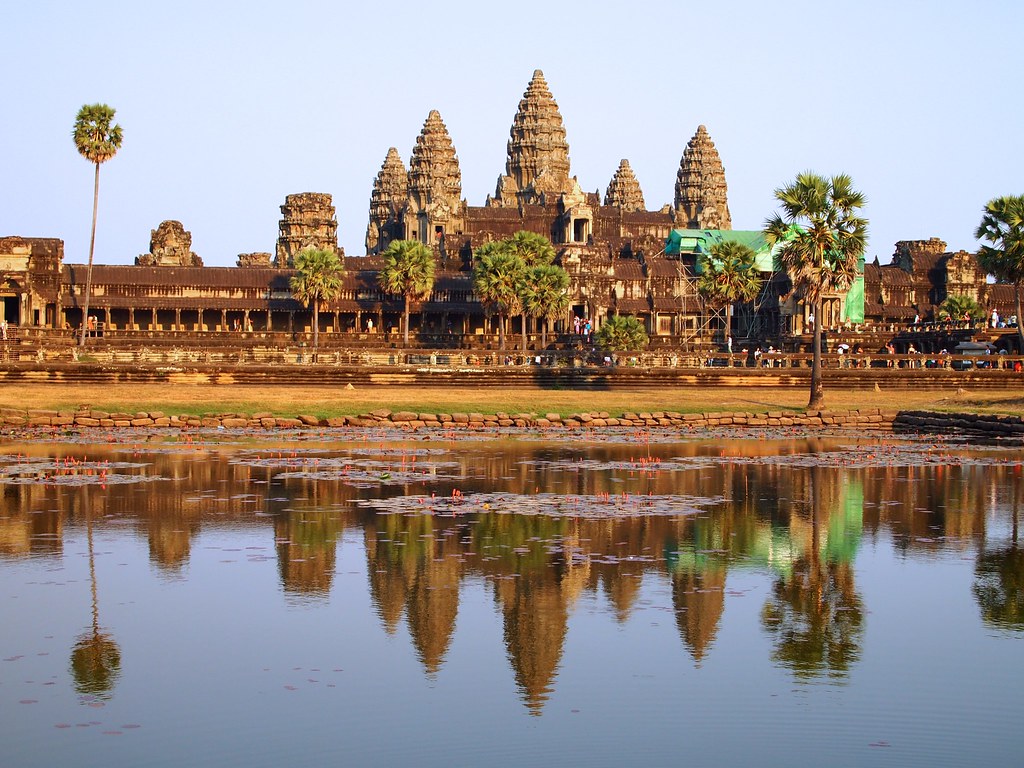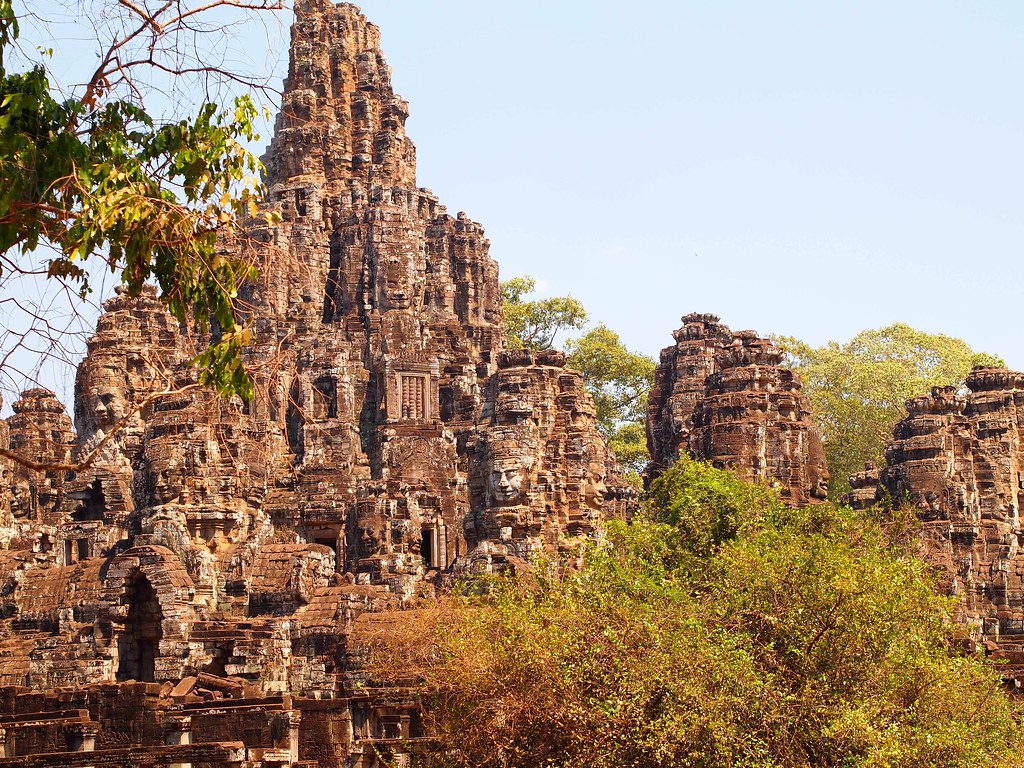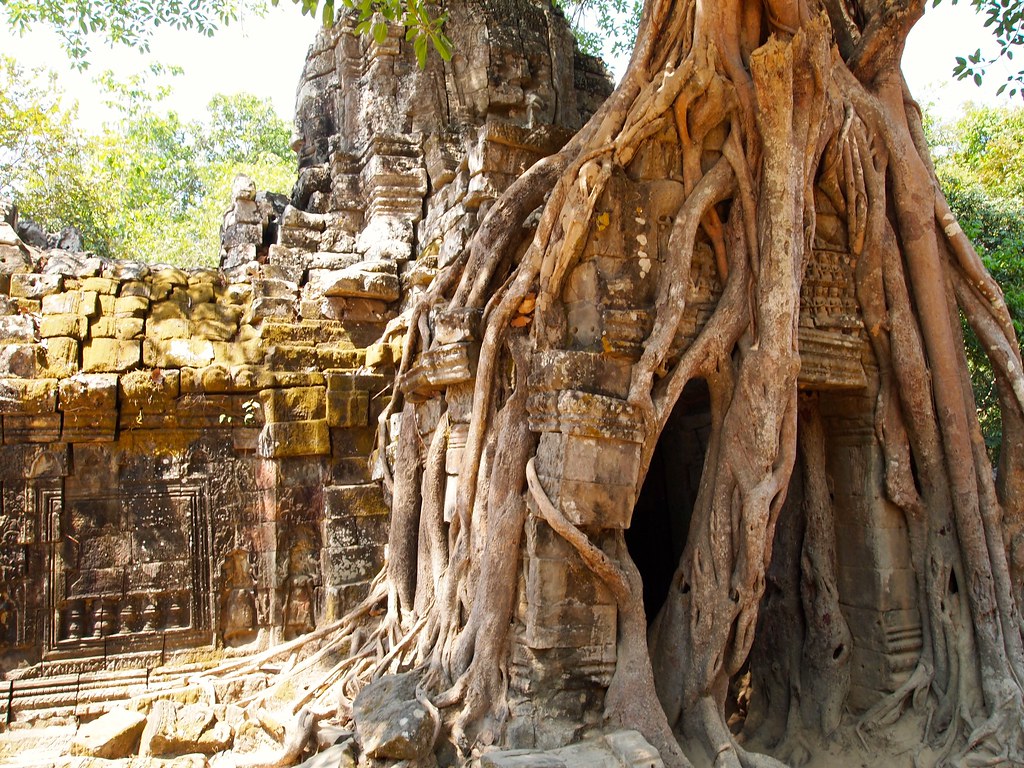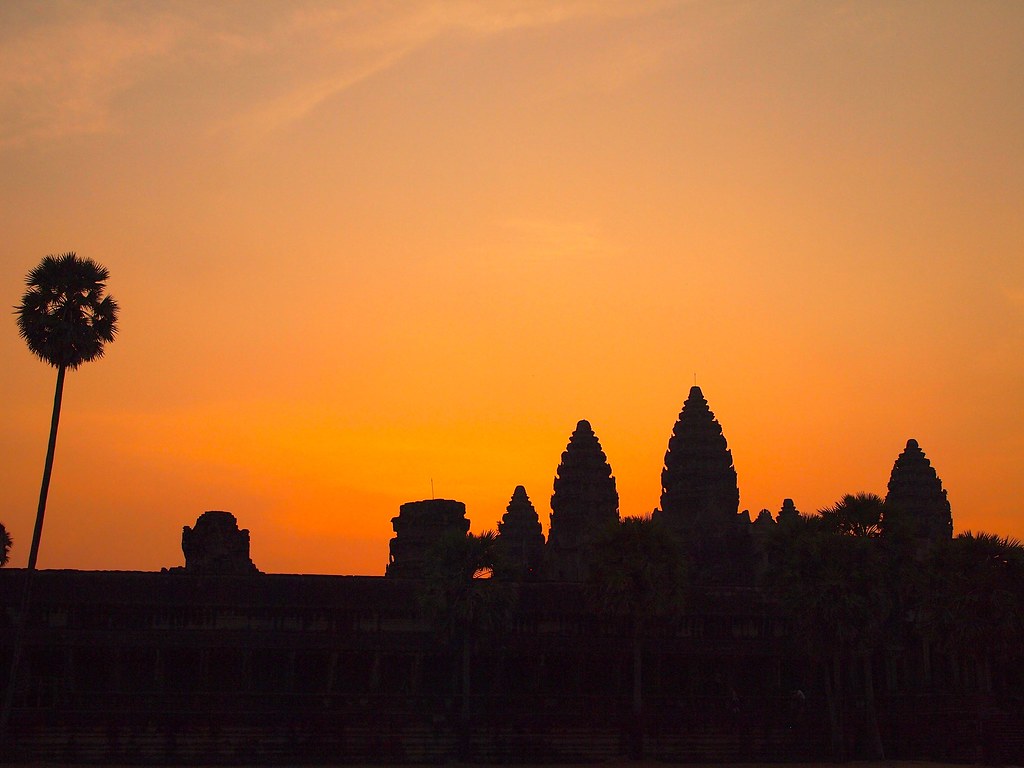Angkor: Simply Amazing
Angkor is a show-off when it comes to superlatives. The largest pre-industrial city in the world — approaching the size of modern-day Los Angeles. The largest religious building in the world. Among the most magnificent World Heritage Sites on Earth. The seat of power for the ancient Khmer empire, which covered the entire Indochinese peninsula and lasted for 500 years. You get the idea.
With all the hype, I was almost expecting to be underwhelmed, disappointed. Like meeting a good-looking man with rotten teeth. But Angkor is a dreamboat. Marlon Brando before he got fat. Ryan Gosling with more then one facial expression. In short, it lives up to its reputation.
The crowning jewel is, of course, the famous Angkor Wat. It’s on nearly every traveler’s bucket list (including mine) and with good reason. Graceful, symmetrical, jaw-dropping — even in ruins it is awe-inspiring in its beauty and enormity. Even more incredible when you think that it was built in the 12th century using ropes, bamboo scaffolding, and elephants; the sandstone precisely cut to dovetail and hold together with gravity alone; every bas-relief sculpture (and they cover virtually every stone) hand-carved by what must have been an army of skilled artisans.

The other must-see building at Angkor is the Bayon, smack in the center of the old walled city of Angkor Thom. Kind of spooky with its many coldly smiling faces, supposedly bearing an uncanny resemblance to the king who commissioned the structure — what an egomaniac!

There are so many other buildings that would be showstoppers on their own — the magnificent Ta Prohm, being slowly strangled by the jungle, or the ancient hospital of Neak Poan, where people used to swim in the four pools to balance the bodily humors. There are hundreds of temples spread across miles and miles.


Visitors can buy one-day, three-day, and one-week passes to the temples. We bought a three-day pass, which was perfect for us. Angkor is huge, and this allowed us to see the temples at our leisure. One day would have been too rushed, while I think only serious history or architecture buffs could happily fill a week.
It seems most people hire a tuk-tuk for the day to drive them around to the various temples. Others hire a car, a moto driver, or a bike. One day we hired a tuk-tuk to take us around the “Grand Circuit,” containing some of the outlying temples. We biked to the park the second day to take in Angkor Wat, Angkor Thom and the Bayon. An easy bike ride on flat, paved roads, about 10 km from Siem Reap to the Bayon. Just watch out for the crazy traffic! We dodged, weaved, and skirted around peddling schoolgirls, trucks, tuk-tuks, and elephants. It’s hard to believe, as our guesthouse owner told us, that in 2000 there were just four cars in Siem Reap — two for swanky hotels, one for the hospital, and one for the Governor.
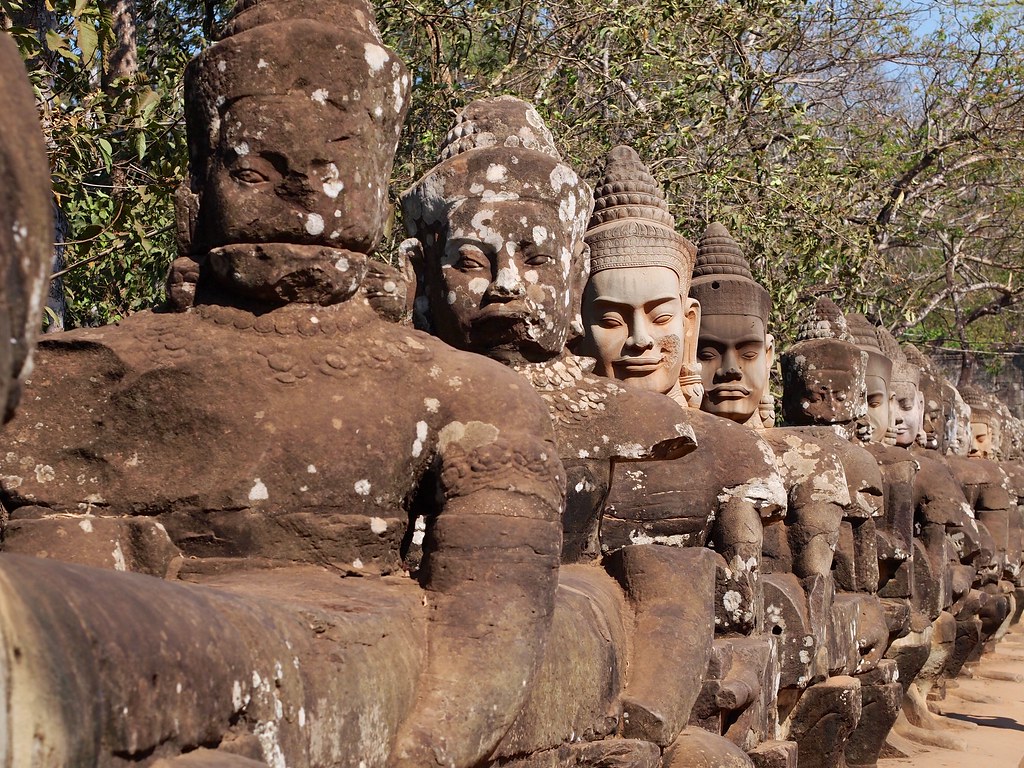
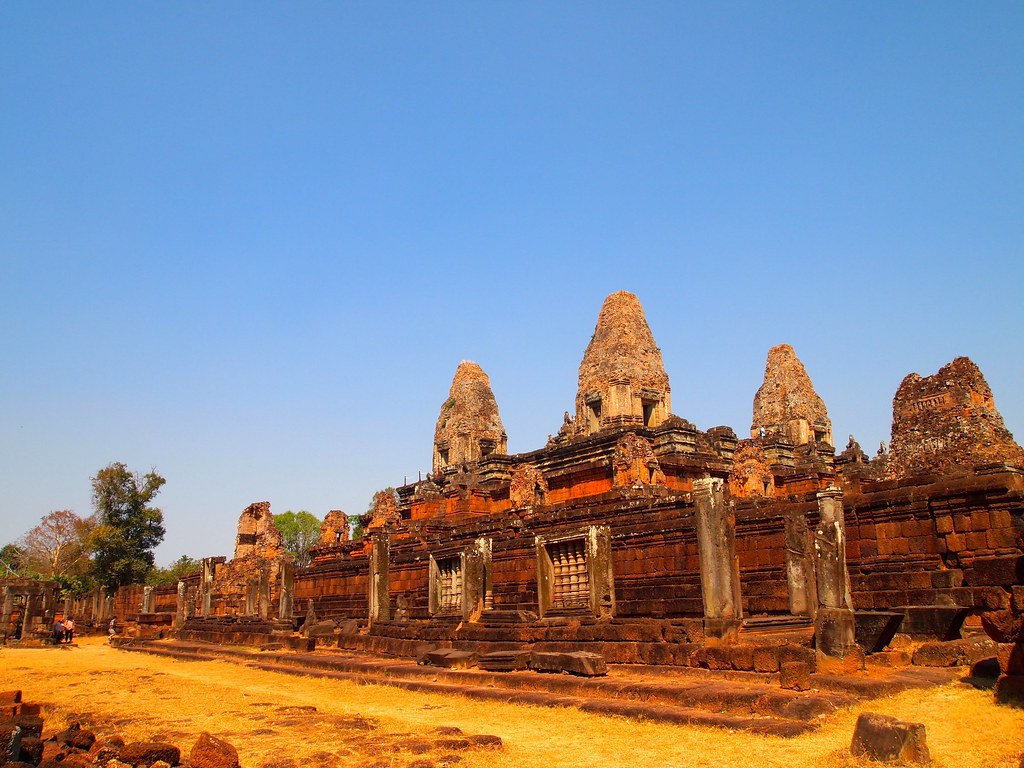

We reserved our third day for the obligatory sunrise trip to Angkor Wat. A sublime sight, well worth the early wake-up call.
Yeah, you saw that last picture right. Sleep-deprived people lined up 10 deep, popping photos like crazy, jockeying for position. One guy laid down in the mud at the edge of the pond! This must be what a Justin Bieber concert is like. Angkor (and especially Angkor Wat) is crowded. After spending three(-ish) days at the temples, we developed a game plan for beating the crowds:
Jordan and Skyler’s tips for staying ahead of the Angkor tourist crush:
- Get there early for sunrise. We left our guesthouse in Siem Reap on a Tuk Tuk around 4:45 AM and were in place by the pond by 5:15. The tour buses seemed to all show up around 5:30. Bring a flashlight — the walk to the temple at this hour is pitch dark.
- Stake out your turf, because the area near the interior pond was 10-15 people deep by 6:00. People were sticking their tripods IN THE POND. Others were attempting to muscle their way to the front of the crowd. Don’t be that guy! We joked that we should have brought galoshes and an inflatable raft for the best view.
- Immediately after sunrise, everyone leaves. You would have Angkor Wat all to yourself if you visited then.
- In general, the outlying temples on the major circuit had far less people.
- Buy your tickets before 8:30. The tour buses are queued up 20 deep at this hour at the ticket booth. Even better, you can buy a ticket after 5 pm, see sunset, and your ticket is good the next morning!
- If you can brave the heat, save the big sights for later in the day when the tour groups go back to their hotels. We were shoulder-to-shoulder at Bayon when we visited mid-morning, but had it nearly to ourselves when we went back in the afternoon.
- Take a break during the hottest part of the day. We grabbed lunch at one of the many noodle shops and sat under a tree and read for a few hours before hitting the temples again in the late afternoon. Angkor Wat, being the only temple that faces west, actually photographs best in the late afternoon. Alternatively, if you had your own transport or were willing to pay for another tuk tuk, you could go back to Siem Reap and come back in the afternoon.
Angkor Wat was one of our “must-sees” of this trip — something we planned our entire itinerary around. It may be crowded, it may be hot, but it was entirely worth it.

